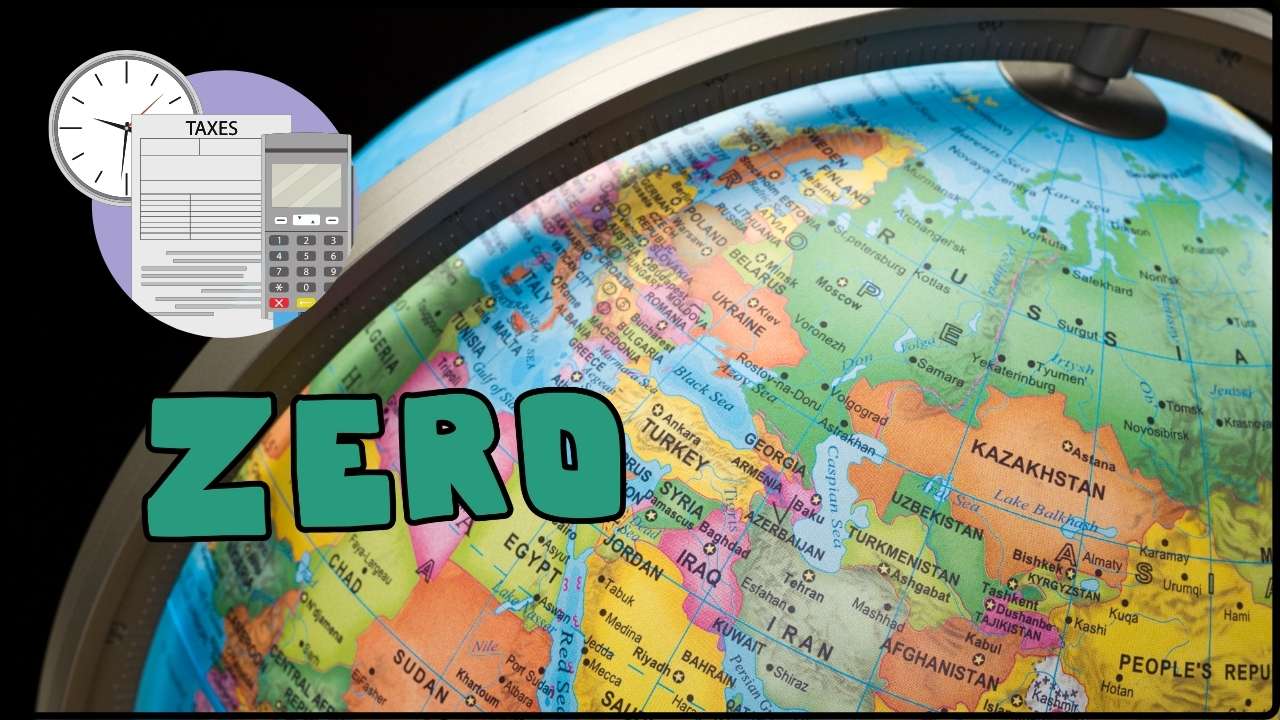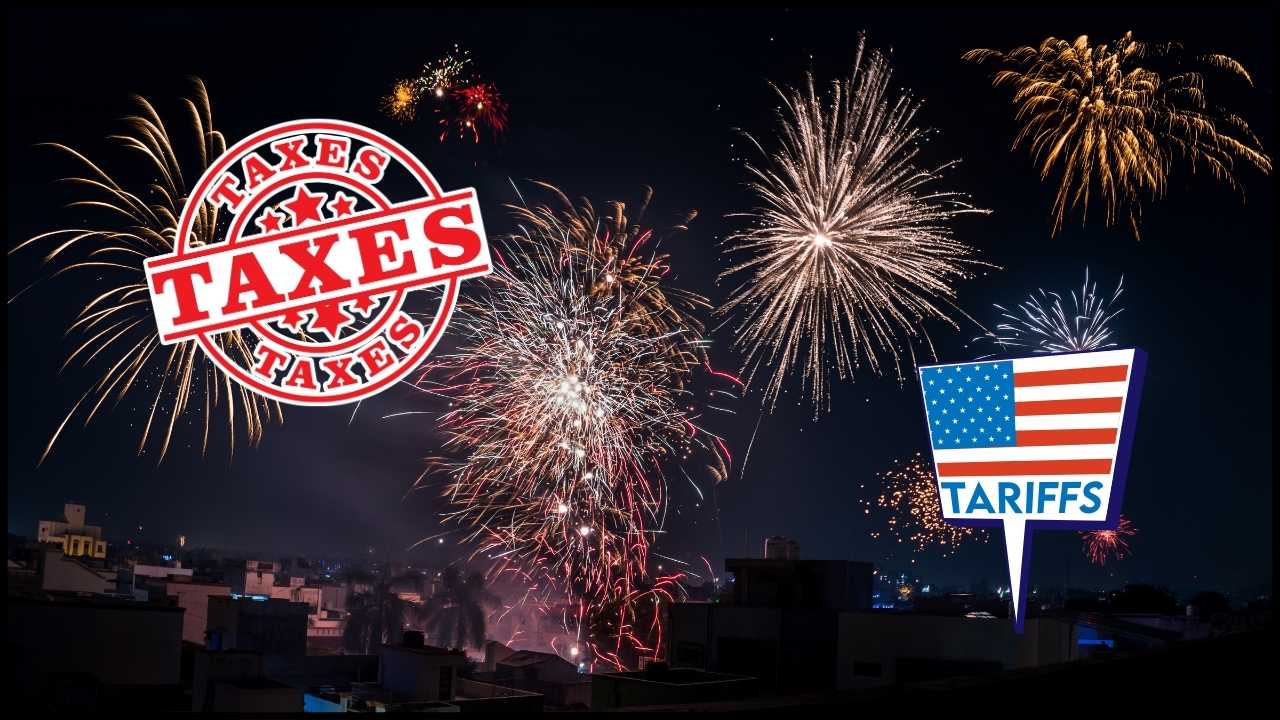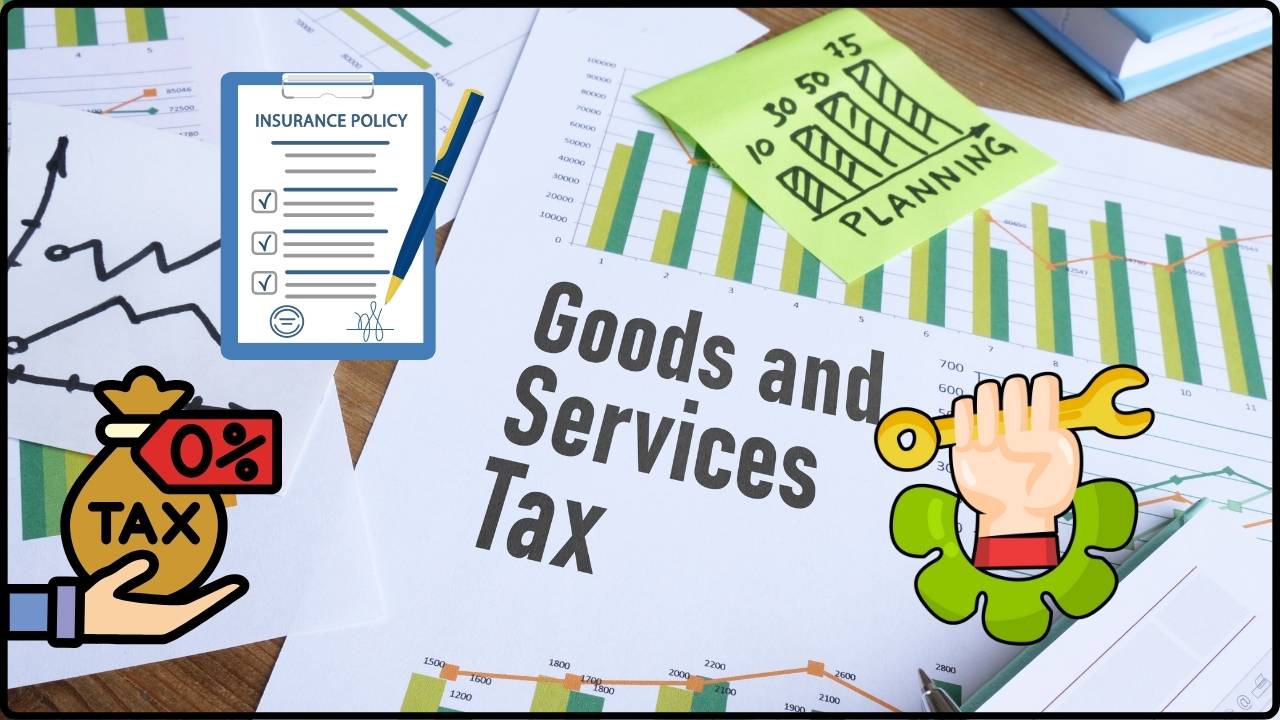Trump Warns Tariffs on Nations ‘Discriminating’ Against US Tech: When you read the headline “Trump Warns Tariffs on Nations ‘Discriminating’ Against US Tech,” it may sound like just another political move. But this announcement could impact everyday Americans—raising prices on goods, shaking up jobs, and even affecting the tech you use daily. On August 26, 2025, President Donald Trump announced that countries passing digital service taxes (DSTs) or strict digital regulations that primarily target U.S. companies will face new tariffs and possibly even export restrictions on advanced U.S. technology like semiconductors. This fight is centered on U.S. tech giants such as Apple, Google, Amazon, Meta, and Microsoft. Trump claims these companies are being punished by European rules while Chinese tech companies are let off the hook.
Trump Warns Tariffs on Nations ‘Discriminating’ Against US Tech
Trump’s warning of tariffs on countries “discriminating” against U.S. tech is more than political theater. It signals a potential digital trade war that could disrupt global supply chains, raise prices for American families, and test relations with close allies like the EU and Canada. The stakes are high: whether this ends in negotiation or escalation will shape not just the future of trade, but the rules of the digital economy. For businesses and consumers alike, the smartest move is to stay informed, diversify, and prepare for change.
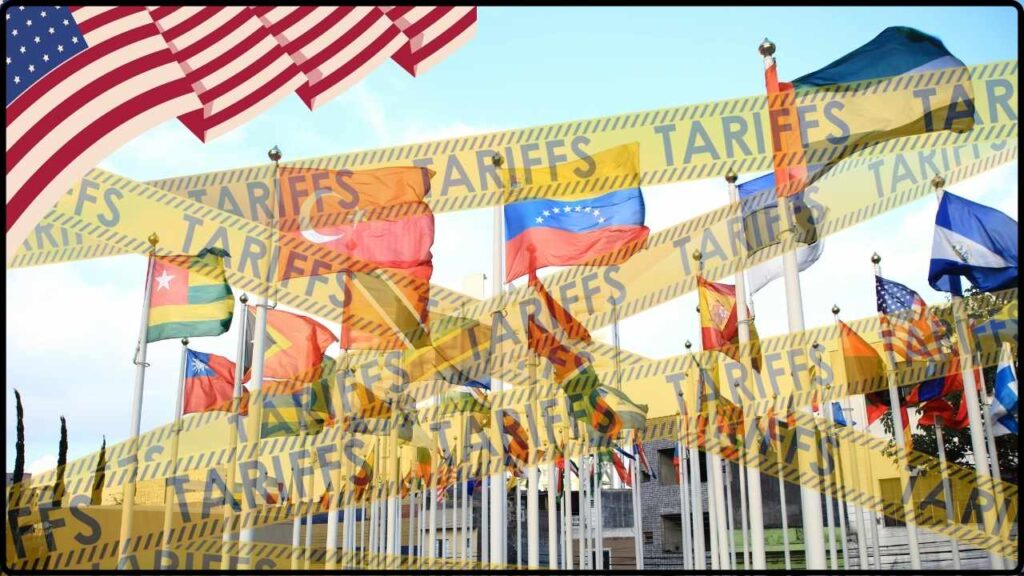
| Topic | Details |
|---|---|
| Date of Statement | August 26, 2025 |
| What Trump Said | Warned tariffs on nations with “discriminatory” digital taxes/regulations |
| Targeted Nations | EU, UK, France, Italy, Spain, Canada |
| Trump’s Complaint | EU’s Digital Services Act (DSA) and Digital Markets Act (DMA) mainly affect U.S. tech |
| Possible Consequences | Retaliatory tariffs, supply chain disruptions, higher consumer prices |
| EU Response | Rejected Trump’s claim, said laws also apply to TikTok, AliExpress, etc. |
| Legal Issues | U.S. courts have ruled that Trump’s past tariffs exceeded presidential powers |
Why Trump Warns Tariffs on Nations ‘Discriminating’ Against US Tech?
Trump argues that the Digital Services Act (DSA) and Digital Markets Act (DMA) in the European Union unfairly burden American companies. These laws regulate online platforms, limit monopolistic practices, and demand stricter data protections. While the rules technically apply to all global companies, most firms large enough to fall under them are American.
On top of that, several countries—including France, Spain, Italy, and the UK—have implemented or proposed digital service taxes. These taxes target revenues from online advertising, digital marketplaces, and social platforms. Since most major players in these industries are American, Trump views this as discrimination against U.S. business.
His warning is clear: repeal or soften these measures, or risk facing tariffs on exports to the United States.
A Historical Look: Tariffs Aren’t New
This isn’t Trump’s first use of tariffs as leverage. During his first term, he waged a trade war with China from 2018 to 2020. The U.S. imposed tariffs on more than $370 billion worth of Chinese goods, and China retaliated by targeting U.S. soybeans, pork, and other exports.
The results were mixed:
- Consumers paid more: Studies showed that tariffs led to higher prices on everyday goods like washing machines, which went up about 12 percent.
- Farmers struggled: U.S. farmers lost billions in export revenue and required $28 billion in government bailouts to stay afloat (USDA).
- Manufacturers adapted: Some industries relocated production to avoid tariff costs.
This history matters because it shows tariffs rarely hurt only foreign countries—they also hit American families and businesses.
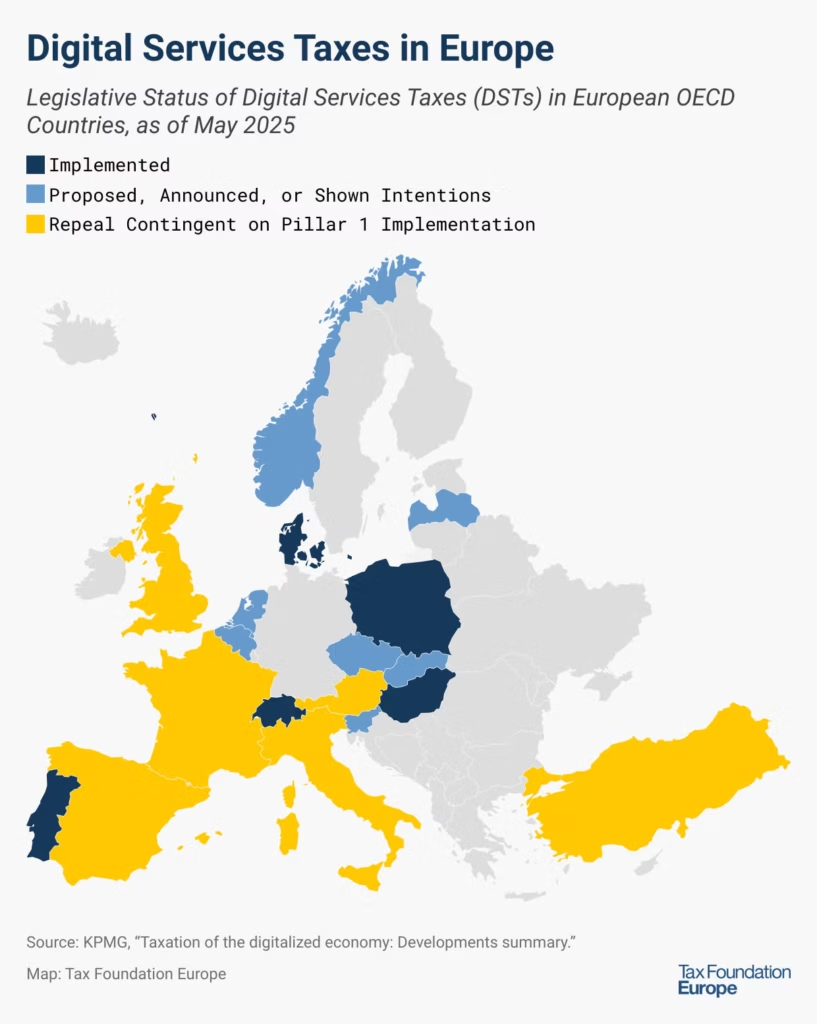
Examples of Past Tariff Tensions
In 2019, Trump threatened 100 percent tariffs on French wine and cheese in response to France’s digital tax. While the tariffs weren’t fully enforced, U.S. importers scrambled, and prices temporarily surged.
European automakers also braced for tariffs that could have added $10,000 or more to the cost of German-made luxury cars like BMW and Mercedes. Even the threat of tariffs was enough to disrupt trade negotiations.
Now, imagine similar tariffs hitting not just wine and cheese but advanced semiconductors, cloud services, and even consumer electronics. That’s why Trump’s new warning is so significant.
The Stakes for U.S. Tech Companies
U.S. tech companies earn billions from European markets:
- Apple generates nearly 25 percent of its total revenue from Europe.
- Google and Meta rely heavily on European advertisers.
- Amazon runs major retail, logistics, and cloud operations across the continent.
If tariffs or retaliatory taxes escalate, these companies could lose market share or face billions in new costs. That could ripple into the stock market, pensions, and 401(k) accounts tied to tech-heavy funds.
The European Union’s Response
The EU has firmly rejected Trump’s accusations, insisting the DSA and DMA are not anti-American. European officials highlight that the rules also apply to Chinese platforms such as TikTok, Shein, and AliExpress.
Their position is that these laws are about consumer rights, data privacy, and competition, not discrimination. They argue U.S. companies dominate simply because they’re the biggest players, not because the rules were designed against them.
This creates a classic trade standoff: the U.S. sees unfair treatment of its companies, while the EU insists it’s applying neutral, protective rules.
Legal and Political Hurdles
Trump’s threat raises another question: does he even have the authority to impose these tariffs?
In past cases, courts have struck down his attempts to use emergency powers for tariffs. In V.O.S. Selections, Inc. v. United States, judges ruled that certain Trump-imposed tariffs exceeded presidential authority and permanently blocked them.
If Trump moves forward now, expect immediate legal challenges from businesses, trade groups, and possibly Congress itself.
Expert Opinions
Trade experts and economists have weighed in:
- Chad Bown, Peterson Institute for International Economics: “We may be entering the world’s first digital trade war, where the battlefield isn’t steel or soybeans, but cloud computing and social media.”
- Jennifer Hillman, Georgetown University: “The courts have already clipped presidential powers on tariffs. Trump will face significant legal and political roadblocks if he tries again.”
- Daniel Ikenson, trade analyst: “Tariffs are like a tax paid by Americans first. It’s a blunt weapon in a digital economy that requires more nuanced solutions.”
How This Impacts Consumers and Workers?
This fight won’t just stay in Washington and Brussels. Here’s how it could affect ordinary people:
- Prices on Imports: If Trump taxes European goods like cars, food, and wine, Americans could pay 20–30 percent more.
- Electronics: Chips, software, and cloud services could rise in cost, trickling down into laptops, phones, and even streaming subscriptions.
- Jobs: Retaliation from Europe could hit U.S. exports like agriculture, energy, and machinery—industries that employ millions.
- Small Businesses: Many rely on affordable imports or tech services. Tariffs could raise their operating costs.
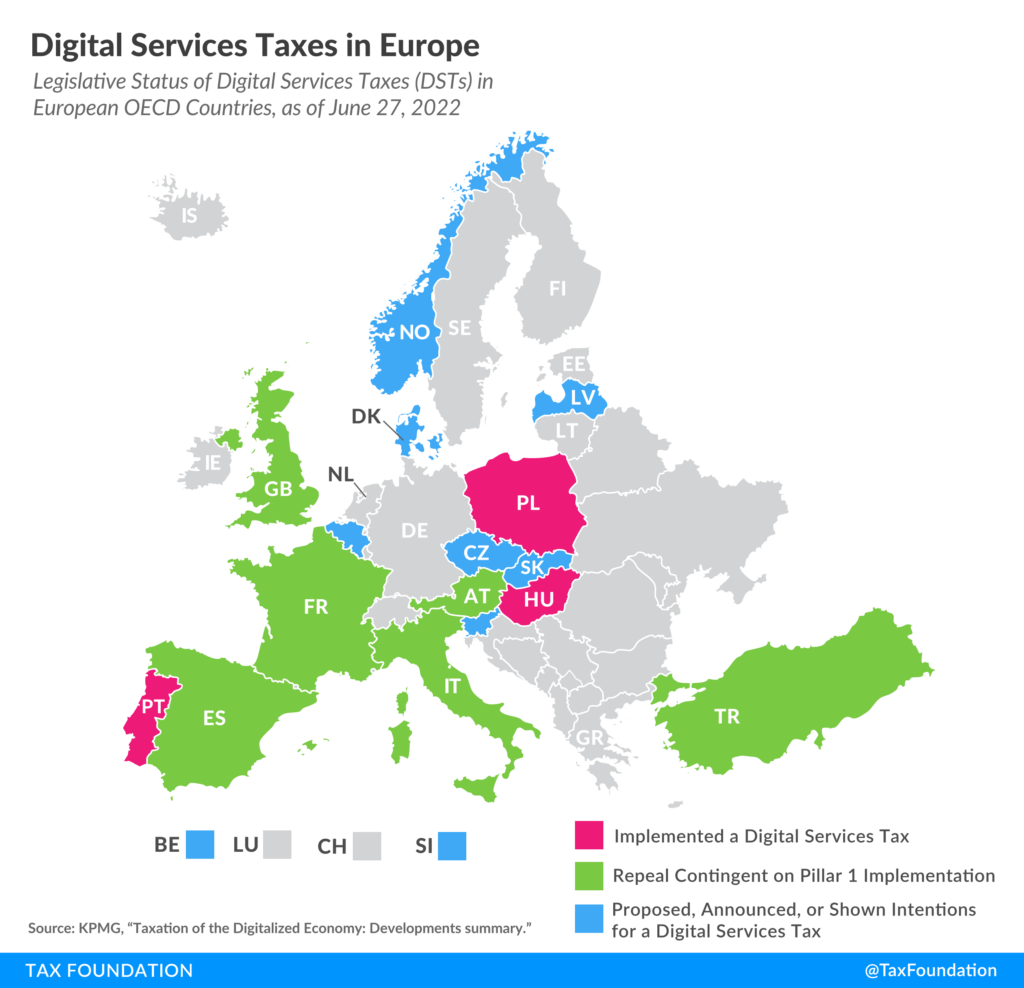
Possible Scenarios
Best-Case Scenario: Negotiations through global organizations like the OECD produce a compromise digital tax framework. Tariffs remain only as a threat.
Middle Scenario: Trump imposes limited tariffs, but allies negotiate exemptions or reductions over time.
Worst-Case Scenario: A full-scale digital trade war erupts, with tit-for-tat tariffs. Consumers pay higher prices, industries face supply disruptions, and U.S.-EU relations sour at a critical time.
Trump’s Tax Credit Shock Isn’t As Bad As Feared – Solar Stocks Surge Big
US Abruptly Cancels India Trade Talks Amid Tariff Tensions
FHRAI Pushes GST Rationalisation To Boost Indian Tourism Globally
What Businesses and Professionals Should Do?
- Diversify Supply Chains: Don’t rely on just one region for parts or products. Explore North American or Asian alternatives.
- Plan for Higher Costs: Build tariff scenarios into your budgets. If you sell imported goods, consider how to adjust pricing.
- Stay Engaged: Industry associations often lobby governments on tariffs. Adding your voice could make a difference.
- Watch Markets Closely: Tech stocks and consumer goods companies will react quickly to tariff news.


